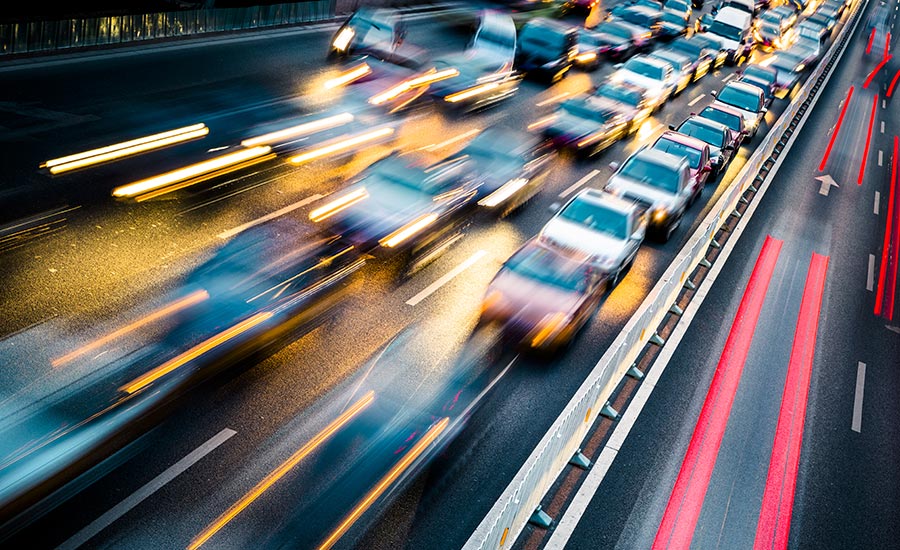

Valued at US$14 billion, Grab is Southeast Asia’s largest mobile technology company that connects millions of consumers to millions of drivers, merchants, and businesses. Through its super app, Grab provides everyday services such as ride-hailing; food, package, and grocery delivery; mobile payments; and financial services.
Having completed over 3 billion rides since its founding in 2012, Grab’s ride-hailing platform has accumulated over 3 petabytes of transportation data from across the region. Grab invests in data science, artificial intelligence and machine learning capabilities to be able to turn its big data into actionable, useful insights.
In 2018, Grab and the National University of Singapore (NUS) launched an artificial intelligence (AI) joint laboratory to develop solutions that can transform urban transportation and pave the way for smarter cities in Southeast Asia. The Grab-NUS AI Lab leverages data from the Grab platform to map out traffic patterns and identify ways to directly impact mobility and livability in cities.
For example, using data analytics, the Lab has identified the busiest routes in Singapore during peak hours. Such insights can inform the authorities to better serve the routes with more shared transport solutions, such as buses and trains, while Grab can increase its services of GrabShuttle, GrabShare or GrabHitch. The solution can bring down travel time during peak hour from 40 to 28 minutes.

Grab, in collaboration with the World Bank Group, developed an Open Traffic platform to address traffic congestion and improve road safety in major Southeast Asian cities. The OpenTraffic initiative provides traffic management agencies and city planners with access to Grab’s GPS data streams via an open data license.
Grab drivers’ GPS data is translated into anonymized traffic data to map traffic speeds on roads for analyzing traffic congestion peak patterns and travel times. Local government agencies can use the data to enhance existing traffic management systems such as optimizing traffic light control and coordination.
Introduced in the Philippines in 2016, the platform has helped improve traffic signal times along the primary west-east arterial in Cebu City, without the need for additional infrastructure investment. The platform also contributes to the reduction of transport cost for commuters and improves the quality of travel time along Manila’s EDSA, the most congested corridor in the country. A few districts in Metro Manila, too, are using the platform to evaluate optimal travel times for their commuters.

In 2018, Grab announced its partnership with Malaysian Digital Economy Corporation (MDEC) for the development of the Malaysia City Brain initiative. The initiative aims to identify potential traffic challenges, develop better predictive modeling, and lead to more efficient management of city traffic in real time, using cloud computing and AI-based technologies.
The initiative combines Grab’s real-time, anonymized traffic data with existing traffic sources like video feeds from 500 CCTV cameras and 300 traffic lights under Kuala Lumpur City Hall, social media feeds, and traffic information from local traffic agencies and government sources, to provide city planners a more comprehensive view of conditions on the roads.
In 2018, Grab and UNDP co-funded a three-year project called Sustainable Urban Mobility for All Initiative (SUMAI) in Cambodia. The project aims at improving availability and quality of transport data in Phnom Penh to better inform policies and investment decisions in support of sustainable and smart urban transport solutions.
The SUMAI project combines Grab’s anonymized GPS data stream with air quality data in Phnom Penh to promote reduction of urban transport Green House Gas (GHG) emissions through clean vehicles and fuel measures. The project also aims to stimulate further innovations in smart transport solutions and accelerate progress on safety and mobility for all.
The project has helped the Ministry of Public Works and Transport and the Ministry of Environment to develop integrated traffic and air quality data management and systems. The Ministries will further leverage the technology and innovation to improve road safety and urban mobility in Cambodia.
Grab is also working with the Tourism Authority of Thailand (TAT) to build a smart data system as part of the ‘Tourism Smart Data, The Time Is Now’ project. Under the agreement, Grab will help TAT better understand the behavior and lifestyle of both Thai and international tourists by analyzing the large amount of aggregated data available in its data stream. The derived insights will be used to support tourism marketing and serving the needs of tourists.
On top of developing a smart data system, Grab will support TAT to launch campaigns to promote local tourism nationwide. The main goals are to attract the current group of tourists to revisit destinations in Thailand, expand the new tourist targets, and to distribute tourism income to emerging destinations that can stimulate the market even further.

Last year, Grab announced its plan to invest $150 million in artificial intelligence in its bid to become an “AI-Everywhere” company. Grab is making use of its big data in the most beneficial ways. While becoming a super app that answers consumers’ everyday essential needs, its partnership and technology-driven approach is supporting Southeast Asia’s smart mobility and development in many countries.
© Geospatial Media and Communications. All Rights Reserved.